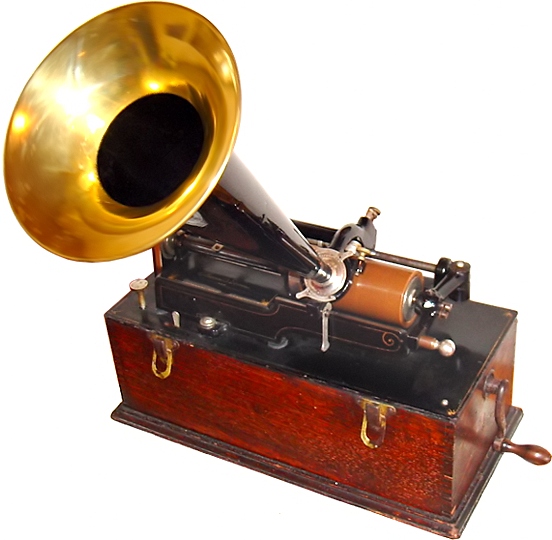Tin-type camera was patented by Hamilton Smith of Gambier, Ohio, in 1856. Idea: Children could learn how the tin-type was different from other kinds of cameras.

Gramophone
Gramophone, later called the phonograph, was patented by Thomas Edison in 1878. He received patent number 200,521. Older children could learn more about the history of sound recording at: Gramophone.
President Roosevelt ordered the internment of about 110,000 Japanese-Americans in 1942. They were sent to concentration camps in western states. They lost their property, valued at about four hundred million dollars. Children could find out more about the reasons behind Roosevelt’s decision. What was life like in the concentration camps? They could learn more at: Japanese Relocation. Students might also read Farewell to Manzanar by Jeane W. Houston and James D. Houston.
Nicolaus Copernicus (born Torun, Poland, 1473; died Fromborck, Poland, May 24, 1543) was an astronomer and priest. He caused great upheaval among authorities when he proposed that the sun and not the earth was the center of our planetary arrangement. Children could learn more at: Copernicus.
Jeff Kinney (born Fort Washington, Maryland, 1971) is a cartoonist, game designer, and author of children’s books. He writes the Diary of a Wimpy Kid series. Children can visit his website at: http://www.wimpykid.com/.
Louis Slobodkin (born Albany, New York, 1903; died Miami Beach, Florida, May 8, 1975) was a sculptor, writer, and illustrator. He wrote and illustrated over 20 books. He and his wife, Florence, collaborated on five more books. In addition, he illustrated books by other authors, including Eleanor Estes and Mabel Leigh Hunt. He received the 1944 Caldecott Medal for his illustrations of Many Moons, written by James Thurber. Children can learn more at: Louis Slobodkin.